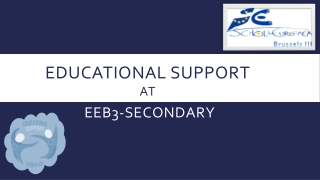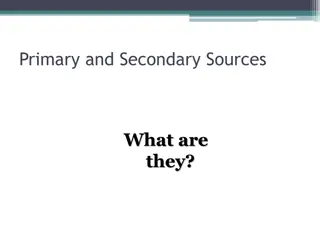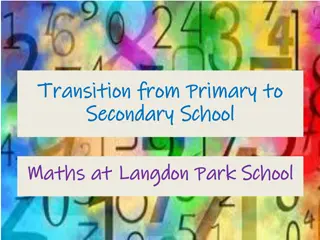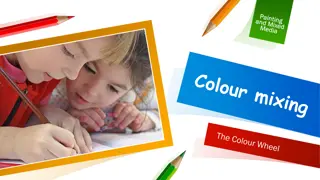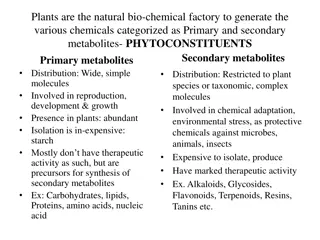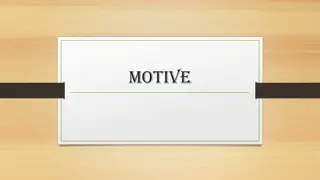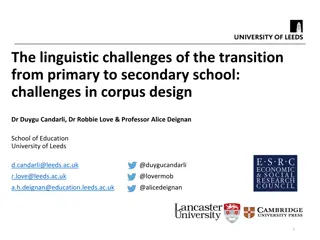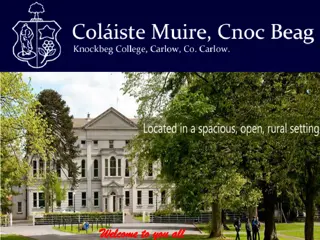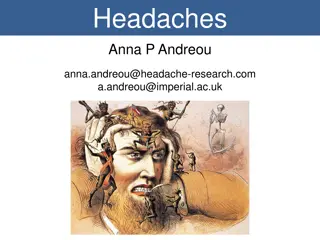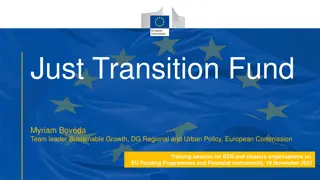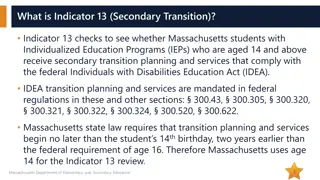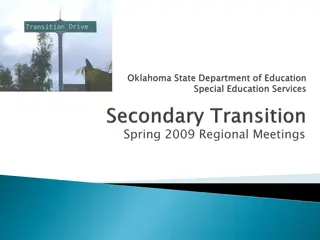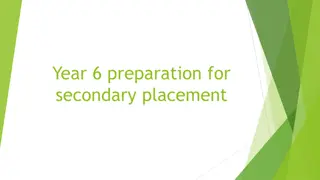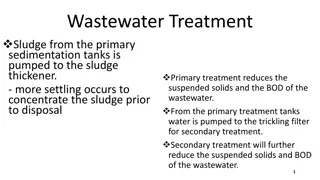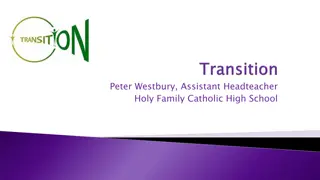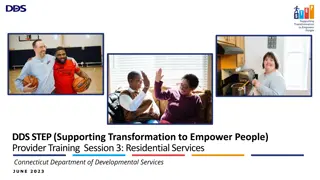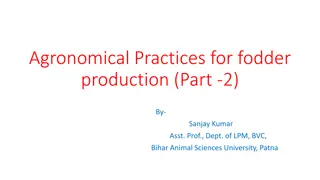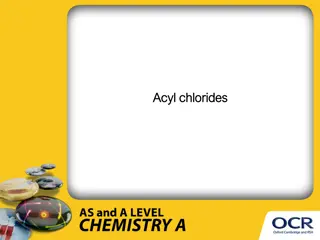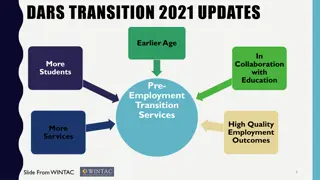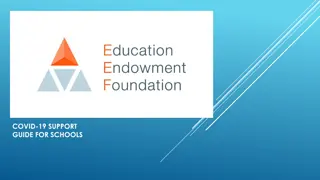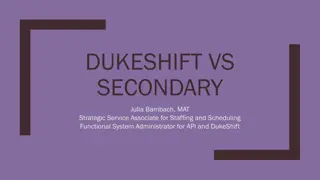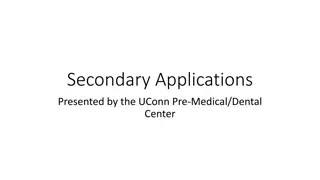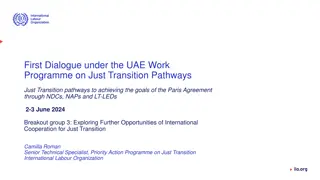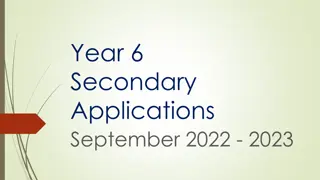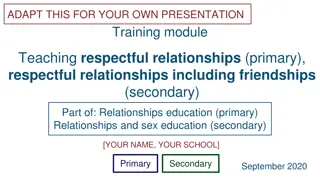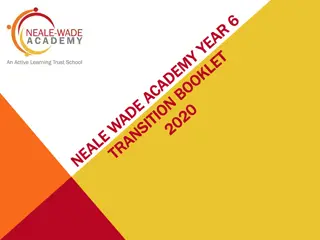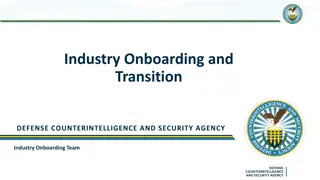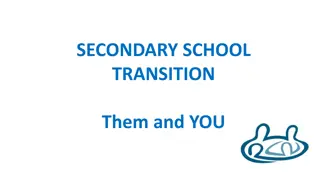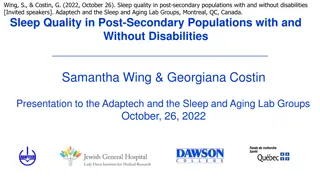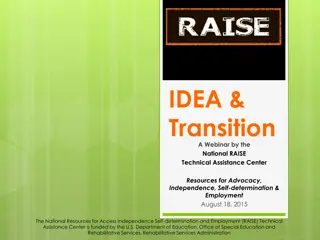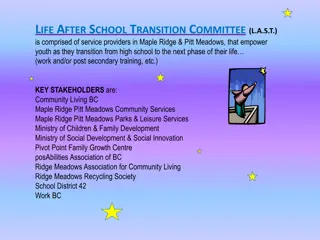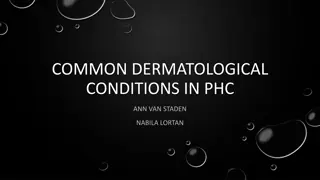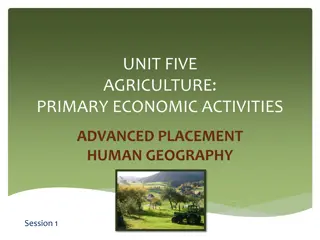Strategies for Effective Primary-Secondary Transition Support
Key principles for successful primary-secondary transition include collaboration, effective communication, well-planned induction programs, clear roles, and evaluation of practices. Actions such as gathering feedback, sharing writing samples, supporting vulnerable pupils, and facilitating teacher visits are essential for a smooth transition.
Download Presentation

Please find below an Image/Link to download the presentation.
The content on the website is provided AS IS for your information and personal use only. It may not be sold, licensed, or shared on other websites without obtaining consent from the author. Download presentation by click this link. If you encounter any issues during the download, it is possible that the publisher has removed the file from their server.
E N D
Presentation Transcript
Literacy and numeracy catch-up strategies DfE 2018 Key principles to facilitate primary-secondary transition: Collaboration before and after transfer including: cross- phase networking meetings; schemes of work Effective communication - including: exchange of information; teacher visits to each other s schools to observe lessons and discuss curriculum; involving parents; use of parent and pupil voice School visits and induction programmes that are well- planned and resourced Practices for different types of pupils Clear roles and responsibilities whole school approach; use of progress data to monitor effectiveness Evaluation of what works and dissemination of good practice
Review of actions from last years meetings
Pastoral Secondary schools to gather feedback on transition visit days from Year 6 pupils and class teachers
Academic A writing sample for each Year 6 pupil to be provided to their secondary school. (Secondary schools to liaise with primary schools re how this will be obtained/ who they should send it to) Contact all Year 6 teachers to ask about texts used in Years 5 and 6 so that secondary schools can avoid using these. Year 2 teachers in infant schools could also be asked to provide this information to junior schools.
Vulnerable pupils Contact schools/ behaviour leads to obtain additional case studies on good transition practice for vulnerable pupils to form a booklet to be uploaded to Wokingham website Foundry staff to focus on supporting primary schools to build pupil independence from Year 5 Audit of training needs of secondary school staff discussion at a SENCO network meeting?
Other Visits of primary teachers to secondary schools and vice versa Create a page on the Wokingham schools hub website on transition http://wsh.wokingham.gov.uk/learning-and- teaching/transition/
General Review the common transfer form Produce an electronic version of the common transfer form Consider other transitions as part of these meetings (pre-school-school / Year 2-3) Hold further transition teach meets - on topics such as culture and values; less able pupils; more able; pupils with behaviour needs; PP; Humanities; STEM; Arts; RS; PE
Academic Work on cross-curricular skills, such as metacognition and independence Federation INSET day - 25thFebruary 2019: Subject- specific sessions on transition are to be included in the programme for each subject - to be led by primary teachers (to include myth busting , samples of Year 6 work, Year 6 curriculum)
Vulnerable pupils More targeted support for vulnerable pupils around managing the demands of secondary school establish Protective Behaviours / Vulnerable pupil transition groups in every school? Develop a transition checklist/ guidance document on transition for vulnerable pupils Proactive vs reactive 3 Year 7 pupils known to Foundry were already school refusing in the autumn term last year. How could that have been prevented?
Vulnerable pupils Gather feedback from vulnerable children: What worked well? What helped them to settle? What could have been better? - And parental feedback (This feedback to inform the transition checklist. Identify children to talk to Oct/ Nov. Produce questionnaire.) Create an additional transition form - All about me : Things I like/ admire; Things I find tricky; What I like/ don t like; What helps me to learn; My goal for the move from Year 6 to Year 7.
Group discussions To what extent have the actions discussed last year been achieved? Are there any difficulties with achieving any of the actions? What did you do differently to support transition this year? What is your evaluation of any new approaches you used? Next steps: How can we move forward with the suggested actions for this year? What else should we work on?



